History
Chinese Scholars’ Rocks
China is birthplace of stone culture. Stones were always collected for different reasons. They were used as tools but also venerated for religious, commemorative or aesthetic purposes. Since the Han dynasty (206 BCE – 220 CE) there are evidences that Chinese used large stones to embellish their gardens and courtyards. Literati and artists brought smaller stones of unusual shape into their studios. This way they brought the nature into their studio because stones were regarded as an incarnation of vital energy, “Kernels of Energy, Bones of Earth” (title of a treatise about the rock in Chinese Art by John Hy) so the stones represented a microcosm of the whole universe on which the scholar could meditate and admire the wonders respectively beauty of nature. Stones are symbols of harmony between men and nature. In early times such stones where placed in basins, later mounted on carved wooden stands and displayed on desks, tables or bookshelves and larger ones were set directly on the floor.
The “Golden Age” of Scholars’ Rocks was the Tang (690 - 908) and Song (960 – 1279) dynasty.
Gongshi is the Chinese term for “an elegant stone for a scholars’ studio”, simply called “Chinese Scholars’ Rocks” or “Spirit rocks” in English.
Four stone types are regarded as classical Scholars’ Rocks, all hard limestones:
1. Lingbi stones from Anhui province
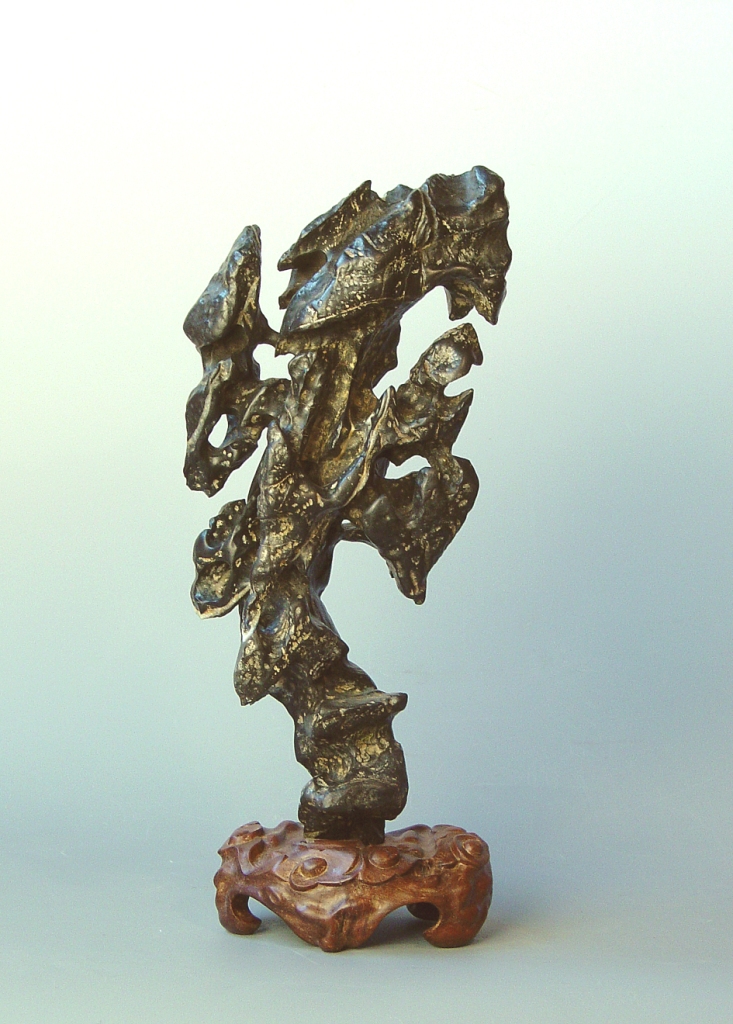
Lingbi stone of elegant movement resembling a dancer, 39 cm h, Richard Sang collection
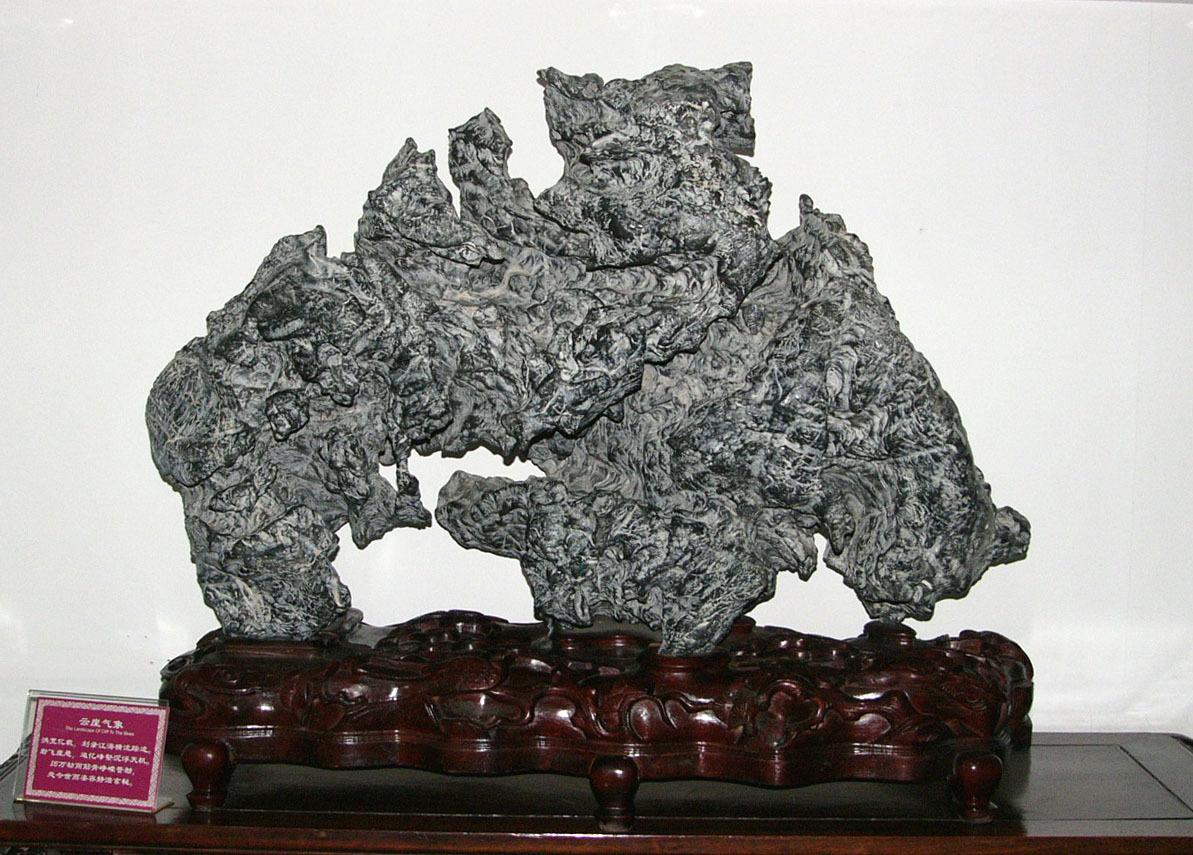
Lingbi stone, The Landscape of Cliff to the Skies, 129 x 84 x 47 cm, Baocheng Museum, Tianjin, China (photo taken 2007, BCI VIP tour)
2. Ying(de)stones from Guangdong
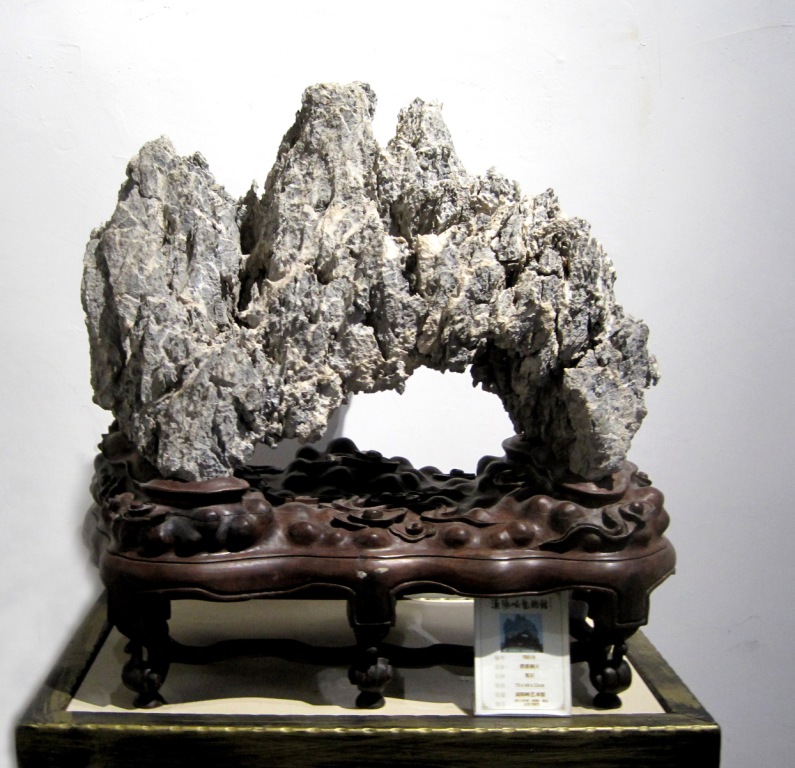
Lingbi stone, The Landscape of Cliff to the Skies, 129 x 84 x 47 cm, Baocheng Museum, Tianjin, China (photo taken 2007, BCI VIP tour)
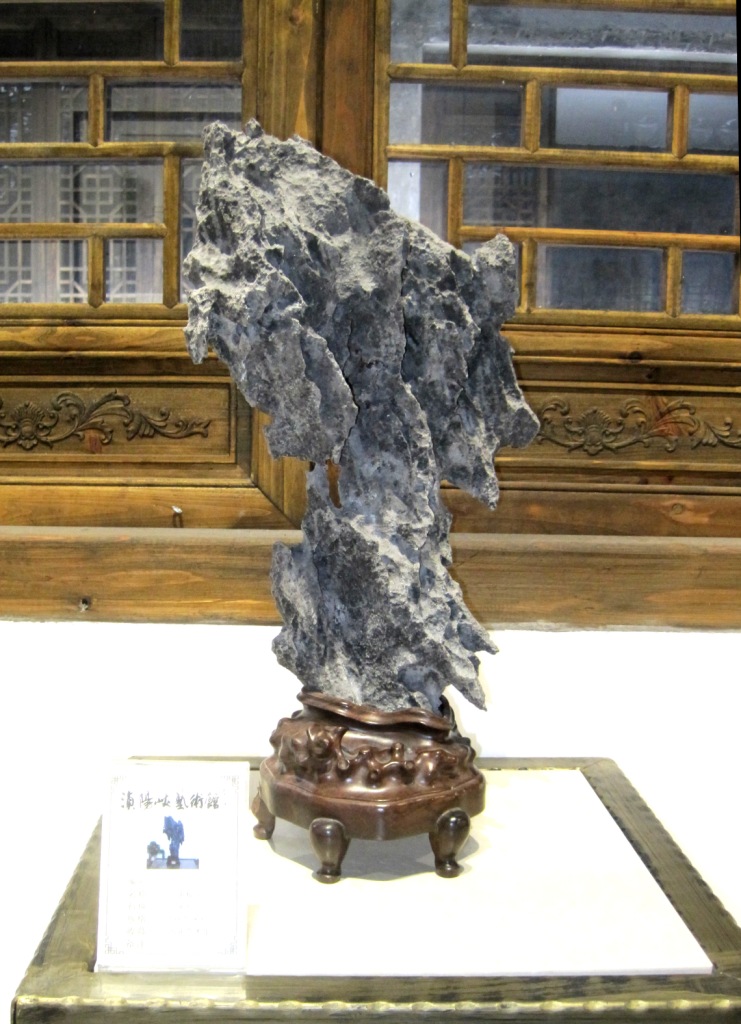
Ying or Yingde stone, origin: Guangdong province, China, photo taken 2015 during BCI tour to Yingde
3. Taihustones from Tai lake in Jinagsu
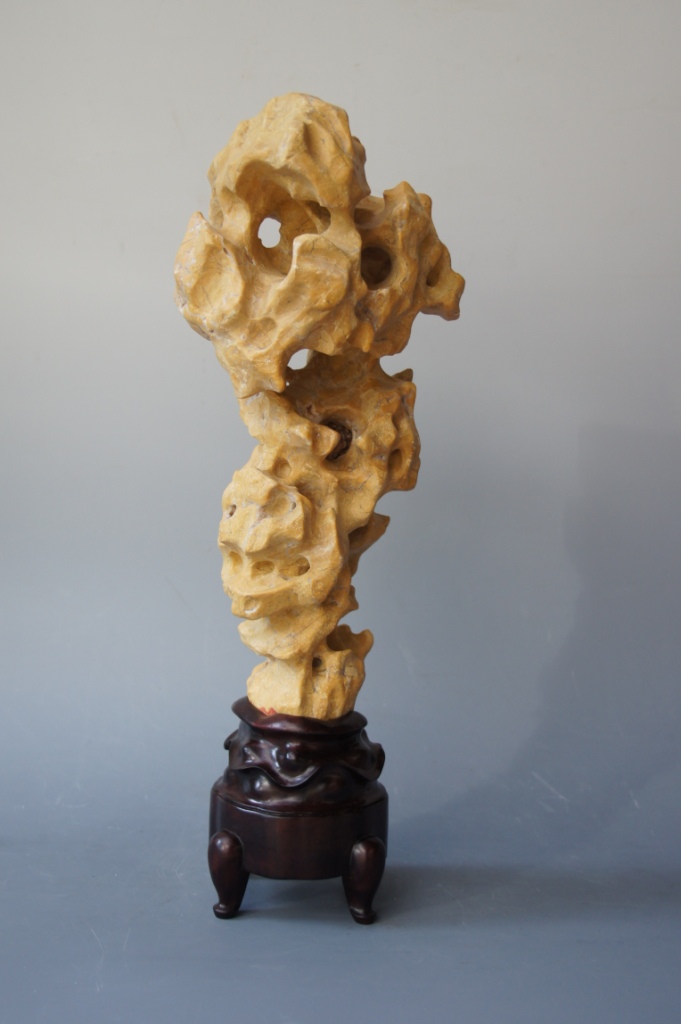
Taihu stone, h: 54 cm, origin: Jiangsu province, China, Benz collection
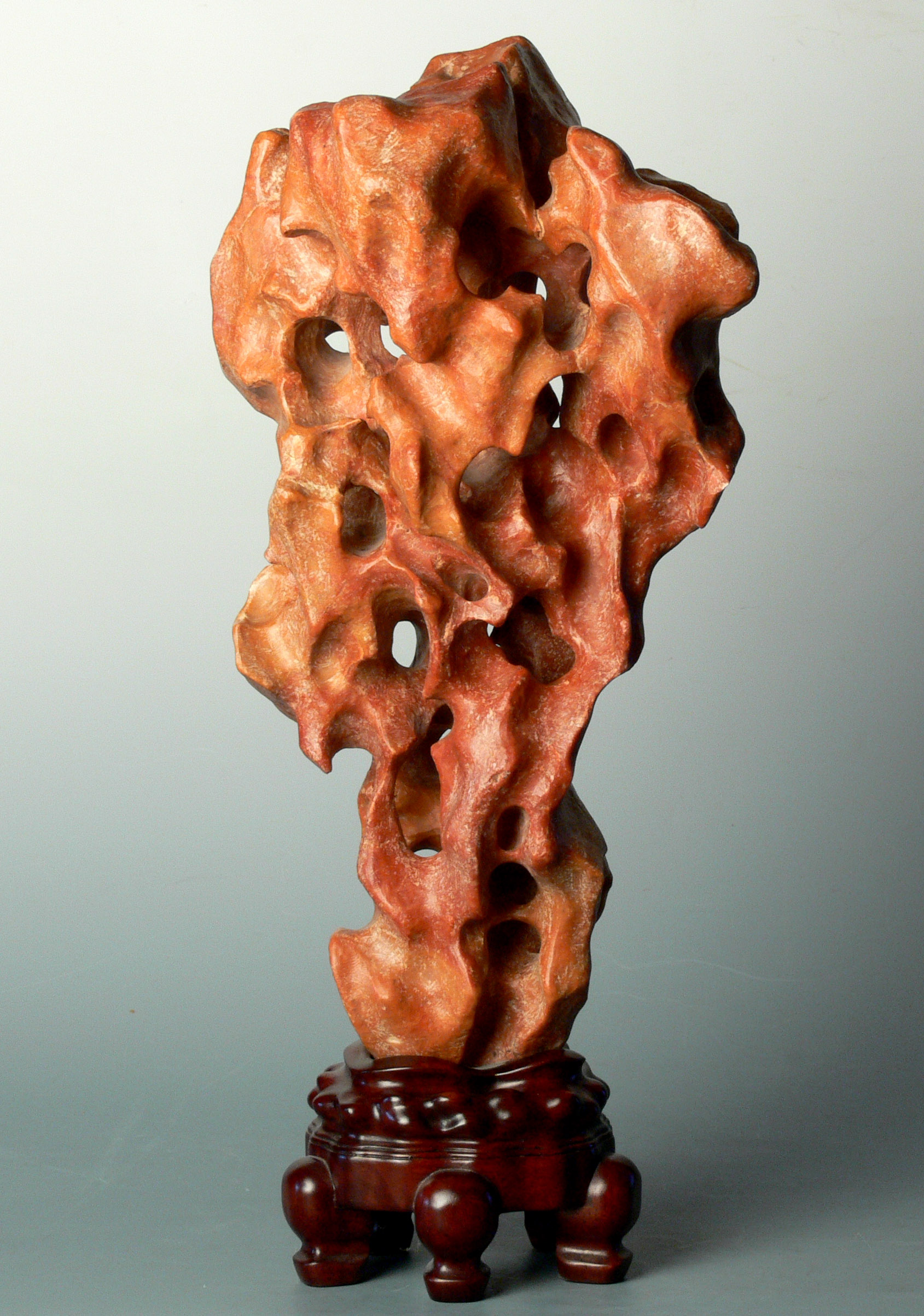
Red Taihu stone, origin: Jiangsu province, China, wooden stand 9 cm h in Jiangnan style, collection of Museum of East Asian Arts in Berlin
4. Kunstones from Shandong
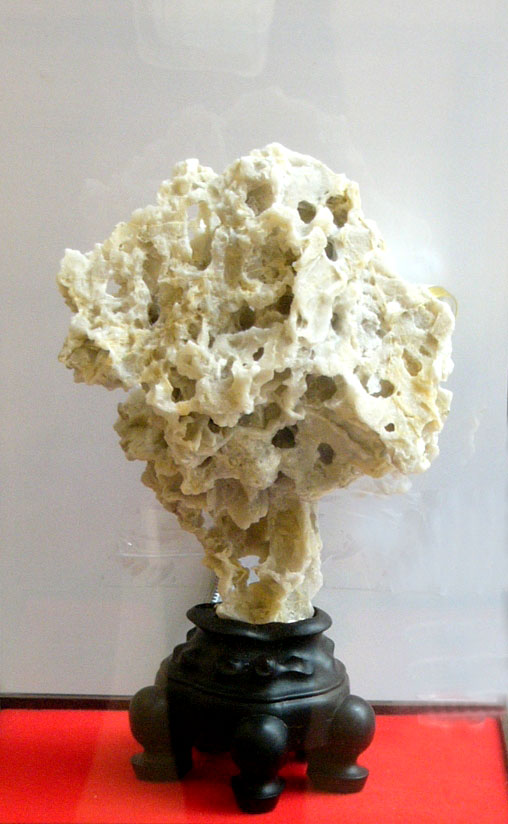
Kun stone, exhibited at “The Second Shanghai Duolun International Master Stone Collectors Exhibition on Invitation”, in Shanghai 2016
The Chinese calligrapher, painter, poet and stone lover Mi Fu 1051 – 1107) established four judging criteria for scholars' stone appreciation:
Shou – thin and elegant
Zhou – wrinkled, with grooves, interesting surface texture
Lou – with holes, channels, openings
Tou - openness, wind and light can pass through holes or channels.
Lou and Tou are closely related.
Suiseki in Japan
Stone appreciation originated in China. It was spread from China to Korea and Japan since the 6th century. In the following centuries Japan was politically closed several times to the outside world. Therefore the admiration of extraordinary stones developed in a different and separate way in Japan and was at first only popular among cultivated Zen monks, tea masters and the samurai class mainly since the Muromachi period (1333 – 1573), Edo (1600 – 1868) and Meji period (1868 – 1911). They preferred subdued colours and simple (‘quite’) shape. Deep black stones were and still are considered as ideal. This kind of stones is best suitable for meditation or contemplation.
The term Suiseki is only about 150 years old. The literal meaning is “water stones” (sui = water, seki = stone). According to some people, this made allusion to their formation by water, respectively the forces of nature.
According to Nippon Suiseki Association (NSA) “the word Suiseki is an abbreviation of the term sansui keiseki, which roughly translates as ‘landscape view stone’ or ‘landscape scenery stone’.”
Nowadays Suiseki are more popular among all social classes and often regarded as a hobby or leisure pursuit
